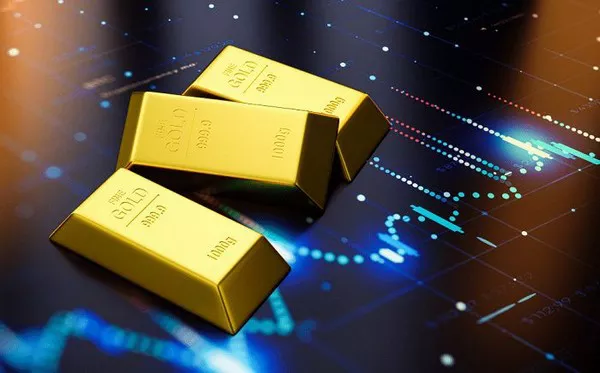When it comes to precious metals, gold has long reigned supreme as the epitome of luxury and wealth. However, another metal, platinum, quietly contends for the crown. In this essay, we will delve into the characteristics and qualities of platinum and gold to determine which one truly deserves the title of the superior precious metal. By analyzing their rarity, durability, aesthetic appeal, industrial applications, and investment potential, we will uncover the hidden allure of platinum and reveal why it surpasses gold in numerous aspects.
I. Rarity: A Measure of Value
Platinum’s rarity sets it apart from gold, making it inherently more precious. While gold is scarce, platinum is even more so, with an estimated 30 times less abundance in the Earth’s crust. This scarcity contributes significantly to the higher price of platinum. The limited supply of platinum elevates its allure, as it becomes an exclusive symbol of prestige and status. Moreover, the extraction and refining processes of platinum are far more complex and costly, adding to its desirability as a luxurious asset. Hence, in terms of rarity, platinum undoubtedly surpasses gold.
II. Durability: A Metal for the Ages
One of the most vital attributes of a precious metal is its durability. In this regard, platinum outshines gold. Platinum possesses exceptional strength and resistance to corrosion, allowing it to withstand the test of time. Unlike gold, which can become scratched or damaged easily due to its malleability, platinum retains its lustrous shine and remains unscathed even after years of wear. This remarkable durability makes platinum an ideal choice for jewelry, especially for pieces meant to be passed down through generations. Its ability to endure the rigors of daily use further solidifies platinum’s position as the superior metal in terms of longevity.
III. Aesthetic Appeal: A Subtle Elegance
While gold’s yellow hue has captivated humanity for centuries, platinum offers an understated elegance that appeals to those seeking a more refined and contemporary aesthetic. Platinum’s naturally white color exudes a sense of sophistication and complements a wide array of gemstones flawlessly. Its cool and subtle tone enables the gems to shine brightly, enhancing their natural beauty without overshadowing them. Additionally, platinum’s ability to retain its luster indefinitely makes it an excellent choice for intricate and detailed designs. Unlike gold, which requires frequent polishing to maintain its shine, platinum’s inherent brilliance persists effortlessly, making it the metal of choice for discerning jewelry connoisseurs who appreciate timeless beauty.
IV. Industrial Applications: Beyond Ornamental Value
Apart from their use in jewelry, both platinum and gold possess significant industrial applications. However, platinum’s versatility and unique properties give it an edge over gold in this realm. Platinum finds extensive use in various industries, including automotive, electronics, and medicine, due to its remarkable catalytic properties and resistance to high temperatures. It plays a vital role in reducing harmful emissions from vehicles, powering fuel cells, and manufacturing electronic devices. Gold, on the other hand, primarily finds its industrial applications in electronics and dentistry, but it lacks the broad range of uses that make platinum indispensable in numerous sectors. The widespread demand for platinum in industrial processes underlines its intrinsic value and positions it as a metal that goes beyond mere adornment.
V. Investment Potential: A Safe Haven
Investing in precious metals has always been an attractive option for individuals seeking stability and security. While gold has long been regarded as a safe haven, platinum offers unique advantages that make it a compelling investment opportunity. Platinum’s relative scarcity, coupled with its increasing demand in various industries, suggests a potential for capital appreciation. Furthermore, platinum’s price has historically shown greater volatility compared to gold, presenting opportunities for higher returns. Additionally, platinum’s intrinsic value as an industrial metal provides a hedge against economic downturns, as its demand remains robust even during times of market instability. Moreover, the investment potential of platinum extends beyond its industrial uses. The rarity and exclusivity of platinum make it a coveted asset among collectors and investors, further driving its value. While gold’s investment appeal cannot be denied, platinum’s unique combination of scarcity, industrial demand, and investment potential positions it as a viable alternative for those seeking to diversify their portfolios.
-
Conclusion
In the battle of precious metals, platinum emerges as the clear victor over gold. Its rarity, durability, aesthetic appeal, industrial applications, and investment potential collectively contribute to its superiority. Platinum’s scarcity gives it an inherent value that surpasses that of gold, while its durability ensures its longevity as a cherished possession. Its elegant and contemporary aesthetic appeals to those seeking a refined beauty, and its versatility in various industries solidifies its significance beyond ornamental value. Lastly, platinum’s investment potential as a safe haven and an asset with potential capital appreciation make it a compelling choice for investors. In the realm of precious metals, platinum reigns supreme.


